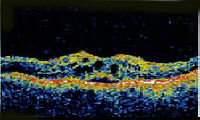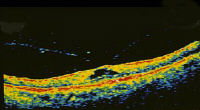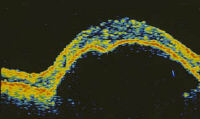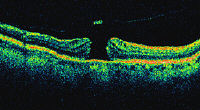Test 38 |
||||||||||||||||||||||
In response to considerable discussion the Examinations Committee of the College has decided to update the format of the Part 3 MRCOphth Examination from April, 2003. An extended matching paper will replace the existing MCQs and they will be no negative marking. The test will probably be easier than the previous format. To familiarize the candidates with the new formats, test 34 and onward will follow the new style as described below by the College. 1. Match the OCT (optical coherence topography a-d ) with the most likely options
|



